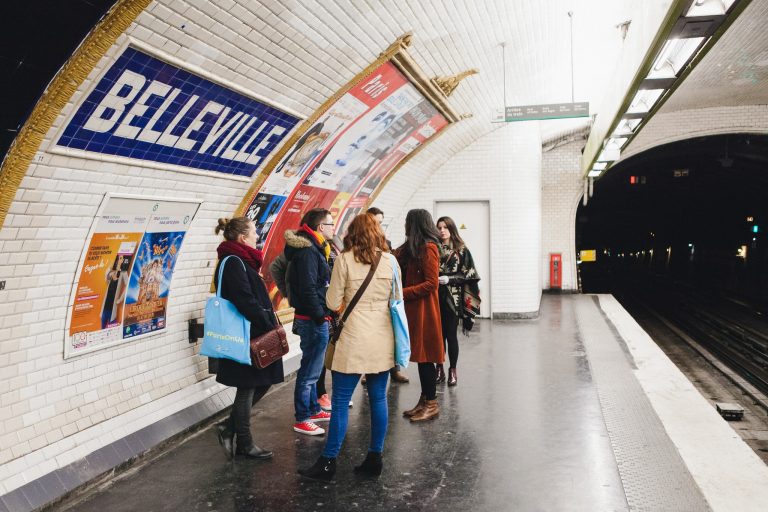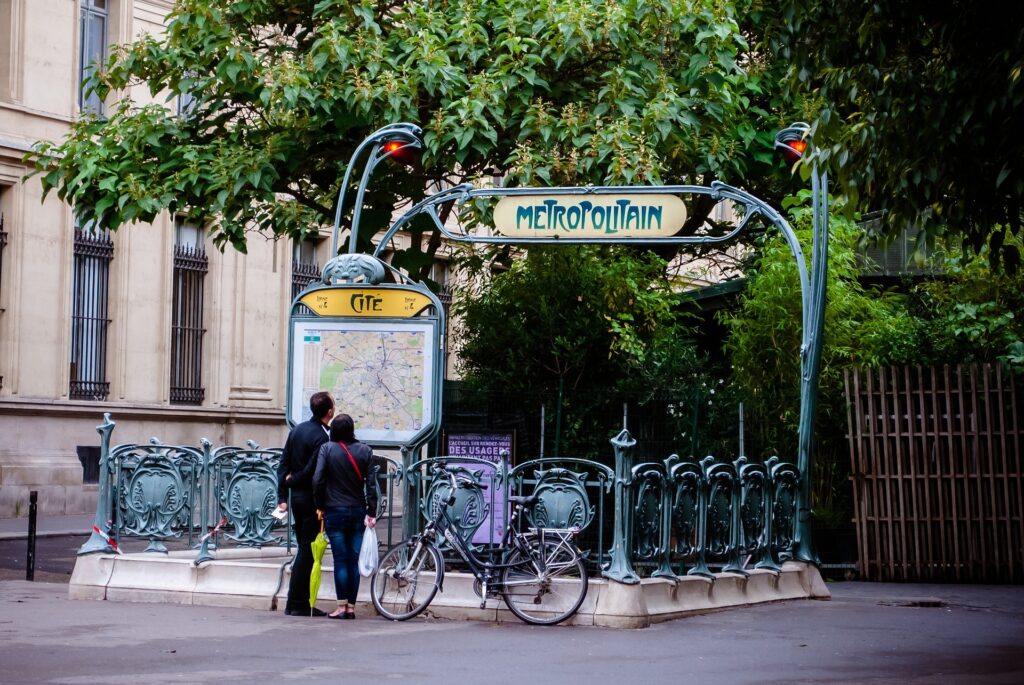The Paris metro system is one of the oldest in the world – having opened in 1900 for the World’s Fair. Known for its unique Art Nouveau entrances designed by Hector Guimard, the Paris Metro is one of the icons of Paris – and your best bet for getting across the city quickly and cheaply.
First, don’t be worried if you don’t speak any French. All of the signs and announcements in the metro system translate to English. (as well as German, Spanish and Chinese, usually). Furthermore, employees working in the metro stations will be able to provide help in case you have questions.
The Paris metro is comprised of 16 lines and 245 stations that run from 5:30am until 1:15am during the week, and until 2:15am on Fridays, Saturdays and holidays. Tickets can be purchased at ticket machines or with an agent at kiosks in the station. Do not ever buy tickets from illegal vendors hanging around in the stations – these tickets likely won’t work, so you’ll lose your money.
Single tickets run at €2.10, but there are many other deals that reduce the price per ticket, but increase overall volume. Normally, the package of 10 runs at ~€17 and will satisfy all of your traveling needs.
Keep your ticket
Remember that once you validate your ticket, it works until you leave a metro station. After you leave, you will need to scan a new ticket to enter again.
In addition to regular tickets, visitors have the option of purchasing Paris Visite tickets which are valuable for either 1,2,3, or 5 consecutive days and cost between €11.65 and €63.90. If you are here for a month or more, you will want to invest in a Navigo pass. To make your journeys easier, we advise you to download a navigation app like CityMapper that will tell you all of your options for getting from point A to point B, and it will even tell you which part of the train to sit in and what exits to take.

While public transportation is convenient and very safe, there are some common sense rules that you should always follow when taking the metro in Paris.
First and foremost beware of pickpockets.
Never keep your phone or wallet in your pocket as metro. Thieves work quickly and will slip it out without you even noticing; therefore, it is best that you hold your bag closely to your body and opt for purses that have a zippers. Furthermore, the pickpockets in Paris tend to work in groups and will target metro stops near tourist sites like the Eiffel Tower and Montmartre. For example, the metro line 1 is known for pickpockets because this line serves the Louvre Museum, the Champs-Elysées and the Arc de Triomphe. Be especially careful if the trains are crowded as this is the easiest time for pickpockets to push against travelers and then quickly steal belongings.
If you happen to be the unfortunate victim of a theft on the metro, file a report with the Parisian police at the nearest police headquarters (you can ask an agent in the metro where this is). Normally, thieves will take cash out of wallets and then discard them back into the metro. Although you may lose some money, you at least will have a good chance at getting your wallet back.
Visitors can be overwhelmed by the thought of taking the Paris metro, but it is actually quite easy and very convenient to use once you get the hang of it. Furthermore, there are rarely holdups, and if there are, they will be announced over the telecom.
Traveling to Paris? Skip the hassle of planning – we design & tailor your dream Paris vacation! Request a custom itinerary of Paris by clicking here!





